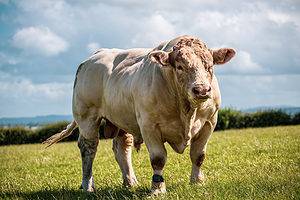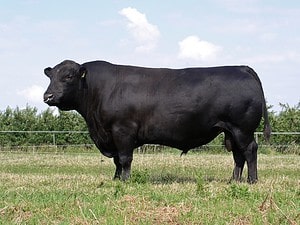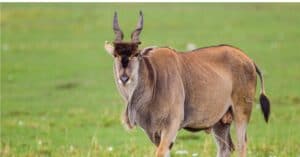If you saw an aurochs and a modern cow side-by-side, would you be able to tell them apart? If you drive through farmland and pastures, is it possible you might pass by some grazing aurochs? This article will explore all things about aurochs including what they are, whether they are extinct, and what their significance is today.
What are aurochs?
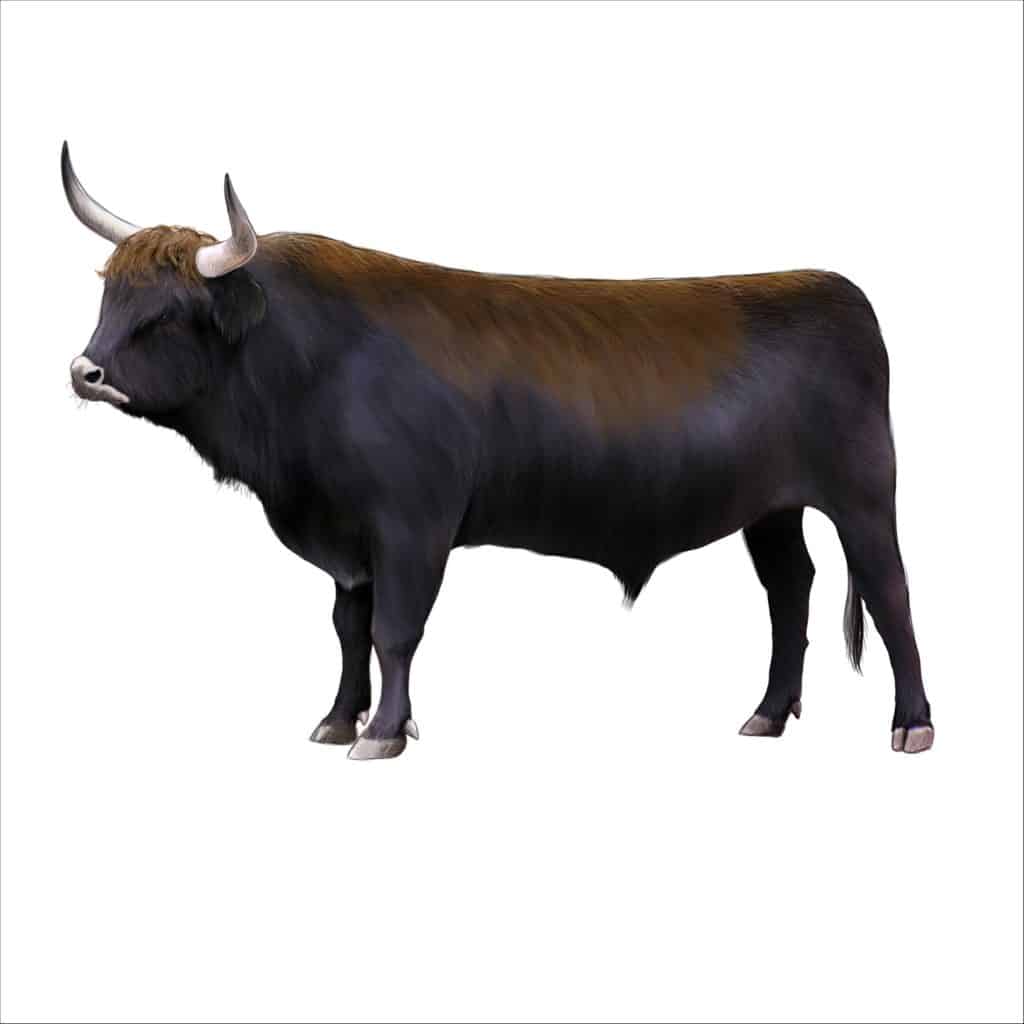
An artistic recreation of an aurochs bull (
Bos primigenius)
©Nicolas Primola/Shutterstock.com
The aurochs (Bos primigenius) is an extinct species of cattle. It stood approximately 70 inches tall at the shoulder and could weigh between 1,500 and 3,300 pounds. Modern cattle, for comparison, vary in size by breed but typically have a shoulder height of 60-70 inches and weigh between 600 and 2,500 pounds. Aurochs were proportionally very different from modern cattle; their legs were longer and slender, their skulls were larger and more elongate, male neck musculature was far more pronounced, and female udders were very small.
Female and male aurochs had massive horns, with bull horns curving more dramatically than cow horns. Their horns could grow to a maximum of 31 inches in length and 4-8 inches in diameter. The largest basal circumference of an aurochs horn was from a French specimen measuring 19 inches!
Geographical Distribution and Habitat
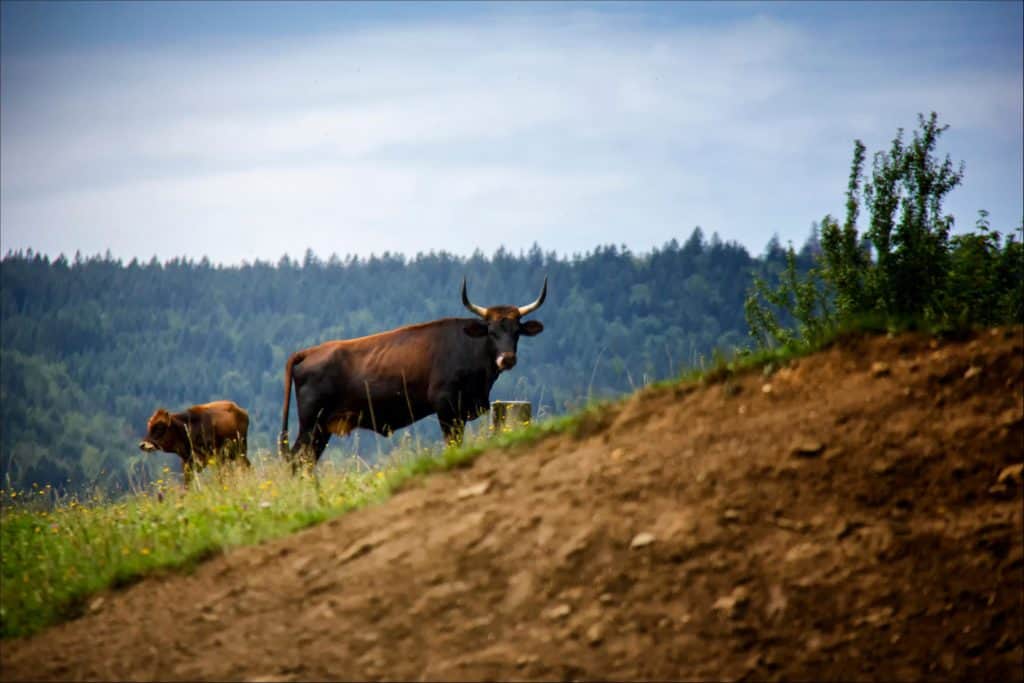
Aurochs likely inhabited primarily wooded areas
©Lucie Bartikova/Shutterstock.com
Aurochs were found widely distributed in North Africa, Mesopotamia, across Europe, western Siberia, and northwestern Russia. Fossils have also been found in China, Korea, and Japan. Fossil evidence and palaeobotanical data suggest that the aurochs typically inhabited forest, temperate grassland, or riparian habitats.
Cultural Significance
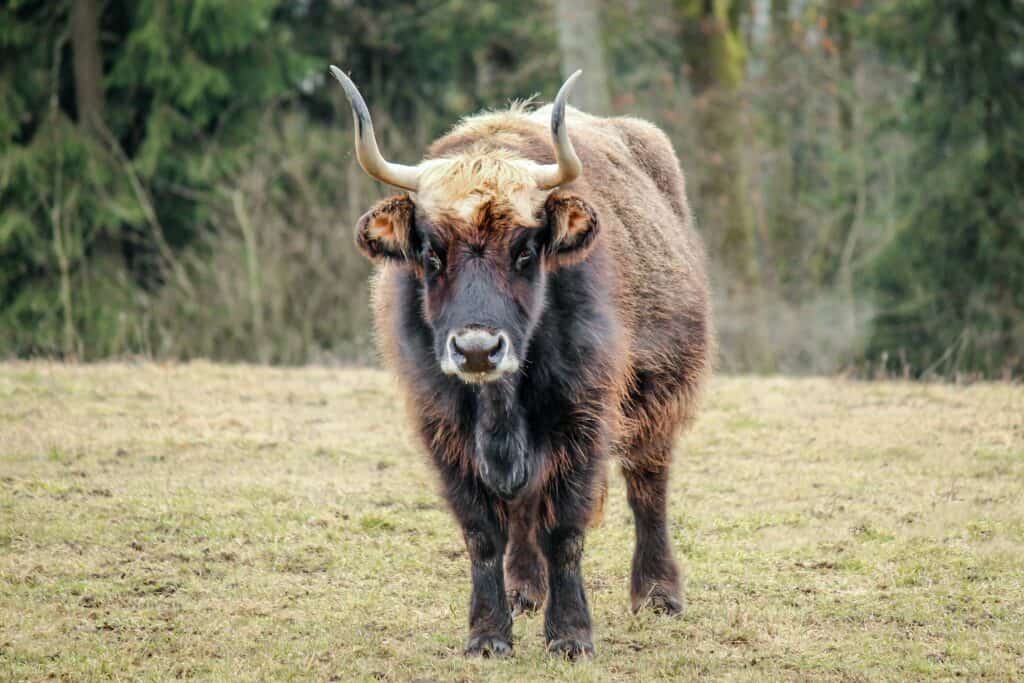
Aurochs appear in ancient art and symbolism in various cultures worldwide
©Annabell Gsoedl/Shutterstock.com
Aurochs held cultural significance to multiple early human civilizations. Depictions of aurochs in cave art, stone carvings, and petroglyphs are found in Europe, Asia, and Africa. In the Mesopotamian Empire, the aurochs was a symbol of power and an epithet of the gods. In the Babylonian Empire, an aurochs adorned the eighth gate to the inner city, Ishtar gate. Also, in the Roman Empire, aurochs were a popular focus of sporting events at the Colosseum.
Relationship to Modern Cattle
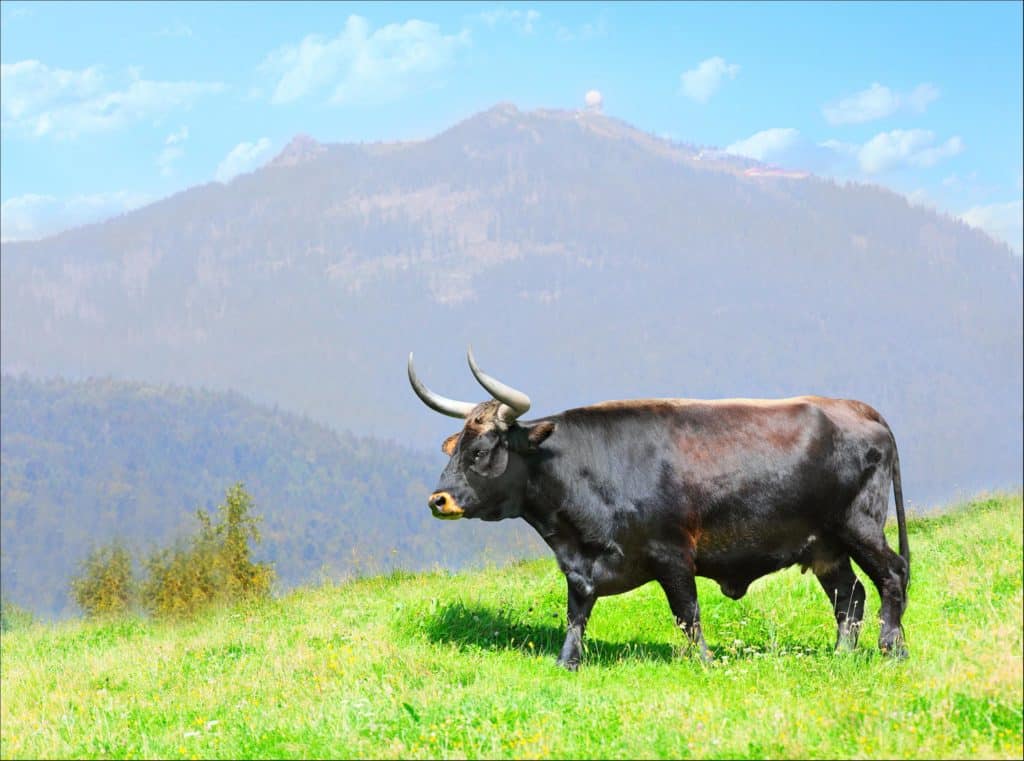
An artistic depiction of an aurochs grazing in a meadow — the aurochs is the ancestral species to all modern cattle species.
©Kletr/Shutterstock.com
Viable genetic information extracted from aurochs fossils suggest that aurochs are the common ancestor to all modern cattle species. Domestication of wild aurochs first began between 9,800 and 7,500 BC in the fertile crescent. Following domestication, cattle became widespread and became one of the most influential animals in human history. Cattle grazing, farming, and breeding has been ongoing for thousands of years and has influenced the gases in our atmosphere, the fertility or depletion of our soils, the diets of populations worldwide, individual livelihoods, and entire economies.
When did aurochs become extinct?
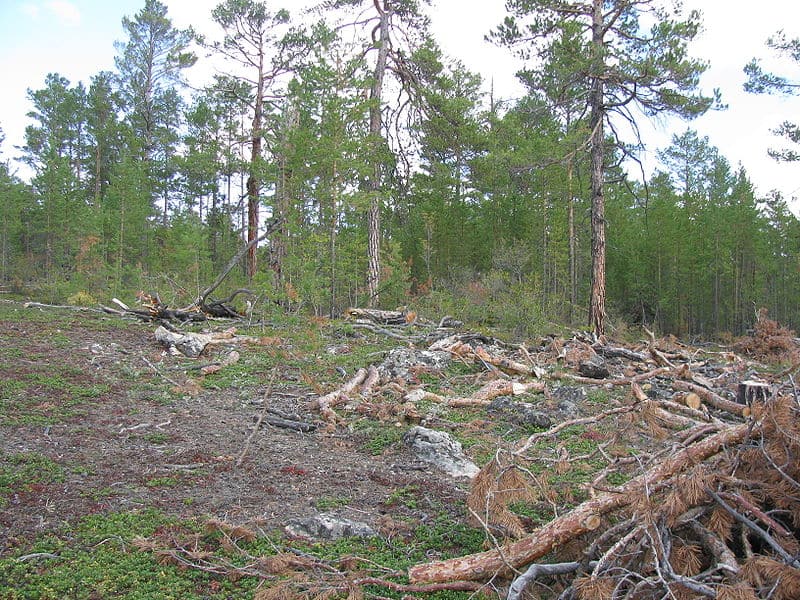
Deforestation was a major issue that affected aurochs that continues today
©Nanoworld / CC BY-SA 3.0 – License
The aurochs was alive during the Pleistocene epoch alongside other ancient megafauna like the woolly mammoth, woolly rhinoceros, and giant ground sloth. This bovine then lived into the Holocene (the current geological epoch), and later became extinct in 1627. Unfortunately, this means there are no more living aurochs; however, they have had an incredibly important role in shaping life on earth today.
Aurochs began to experience major population decline as a result of over-hunting and habitat destruction. Aurochs were commonly captured and used as a battle beast in Ancient Roman amphitheaters and were excessively hunted during this time. As the aurochs became increasingly rare in Europe in the 13th century, it became a status symbol of the noblemen and elite to participate in such hunts. In addition to hunting, clearcutting forestry techniques were also a major threat to aurochs. The last known aurochs cow died due to natural causes in Poland in 1627.
Are aurochs still extinct?

Pictured here is a Heck cattle bull (
Bos primigenius f. taurus) in the Czech Republic. The Heck cattle is an important component in the “breeding-back” efforts for aurochs
©Simon Vasut/Shutterstock.com
Unfortunately, the answer to this question is ultimately yes, aurochs are still extinct; however, recent scientific experimentation has been working against this. Scientists are currently breeding different modern cattle species that retain various primitive traits in attempt to “bring back” the aurochs. This is being done primarily to diversify wild grazer species because aurochs are known to be resilient and adaptable grazers in the wild, unlike domestic cattle.
“Back-breeding” or “breeding-back” descendant species to recreate an extinct ancestral species is debatable in its efficacy, however breeding cattle species and selecting for specific primitive traits may allow for the creation of a cattle breed analogous to the extinct aurochs. Various cattle species bearing genetic markers for traits similar to their aurochs ancestors have been bred generation after generation, moving scientists closer and closer to creating a modern replicate. To read more about the back-breeding and “de-extinction” of the aurochs, click here and here!
Additional Fun Facts!
- The aurochs was first described as a species in 1827
- During mating season, male aurochs fought each other for access to mates, often to the death
- In some cultures, aurochs hair woven into a belt was thought to increase female fertility
- The oldest human-made engravings found in Africa are depictions of aurochs in the upper Nile valley dating to 16-15,000 years BCE
Up Next
- Discover The 10 Different Types Of Cattle You Never Knew Existed
- How Many Cows Are In The World?
- Discover 8 Of The Biggest Animals That Have Gone Extinct
- 4 Animals That Have Gone Extinct In 2022 (Or Probably Will)
The photo featured at the top of this post is © Tito Slack/Shutterstock.com
Thank you for reading! Have some feedback for us? Contact the AZ Animals editorial team.



